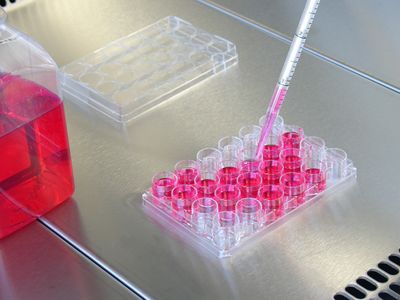To reversibly sequester and release chosen cargo proteins, researchers engineer cells to produce a scaffold protein that forms condensates, or membraneless organelles, in the cell cytoplasm (panel 1). They then select a particular cellular protein as cargo (yellow) and genetically engineer it to be linked with a peptide tag (orange) that interacts with the scaffold protein. This causes the cargo to be sequestered inside the membraneless organelle (panel 2), thereby blocking whatever function the cargo protein had in the cytoplasm. In one version of the method, tested in yeast cells, the researchers engineered the tag to be linked to the cargo via a photocleavable protein (blue). Illuminating the cell caused the photocleavable protein to break down and the cargo protein to be released into the cytoplasm, rebooting cell behavior (panel 3).

Read the full story.



